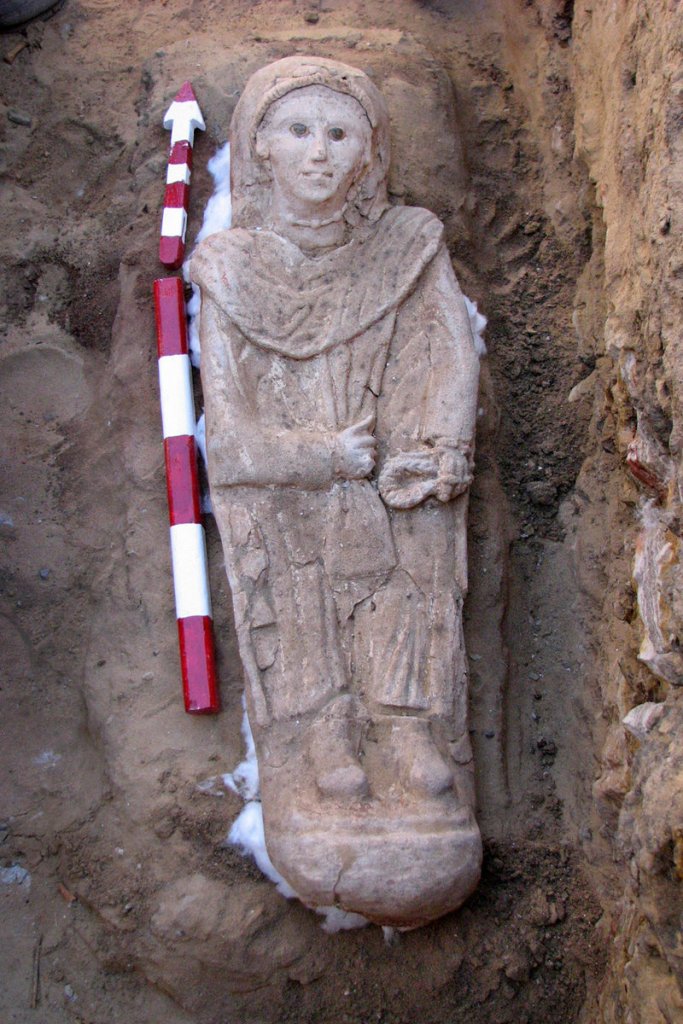CAIRO – Egyptian archaeologists discovered an intricately carved plaster sarcophagus portraying a wide-eyed woman in a newly uncovered complex of tombs at a remote desert oasis, Egypt’s antiquities department announced Monday.
It is the first Roman-style mummy found in Bahariya Oasis, some 186 miles southwest of Cairo, said archaeologist Mahmoud Afifi, who led the dig. The find was part of a cemetery dating back to the Greco-Roman period containing 14 tombs.
“It is a unique find,” he said, confirming that initial examinations indicate a mummy is inside the coffin.
The carved plaster sarcophagus is only 3 feet long and shows a woman wearing a long tunic, a headscarf, bracelet and shoes, as well as a beaded necklace. Colored stones in the sarcophagus’ eyes gave the appearance she is awake.
Afifi said they had not dated the new find yet, but the burial style indicated she belonged to Egypt’s period of Roman rule lasting a few hundred years and starting in 31 B.C.
He said his team first thought they had stumbled across a child’s tomb because of its diminutive stature, but the decorations and features indicated it was a woman.
Afifi said it was still unclear who the woman was but said it was most likely she was a wealthy and influential member of her society, judging by the effort taken on the sarcophagus.
Mummies of people of diminutive stature have been unearthed in other parts of Egypt, where they appeared to have importance in local religions at the time, he said.
Archaeologists also found a gold relief showing the four sons of the Egyptian god Horus, other plaster masks of women’s faces, several glass and clay utensils and some metal coins.
Afifi said the find suggested the presence of a larger tomb complex, but humid weather in the area may have destroyed similar sites. He said none of the other 13 graves were as complete as that of the woman.
The find was made after archaeologists made a series of exploratory digs ahead of a local council plan to build a youth center on the land. The area is known for its relics from the Greco-Roman period.
Bahariya Oasis rocketed to fame a decade ago with the discovery of the “Valley of the Golden Mummies,” a vast cemetery that has yielded up hundreds of mummies, many covered in gold leaf, from the Greco-Roman period. Those sarcophagi were decorated in a more traditional ancient Egyptian style, rather than the Roman style of the current find.
Discoveries from this period indicate the comparative wealth and prosperity of the oases at the time due to their location on major desert trading routes.
Copy the Story Link
Send questions/comments to the editors.



Success. Please wait for the page to reload. If the page does not reload within 5 seconds, please refresh the page.
Enter your email and password to access comments.
Hi, to comment on stories you must . This profile is in addition to your subscription and website login.
Already have a commenting profile? .
Invalid username/password.
Please check your email to confirm and complete your registration.
Only subscribers are eligible to post comments. Please subscribe or login first for digital access. Here’s why.
Use the form below to reset your password. When you've submitted your account email, we will send an email with a reset code.